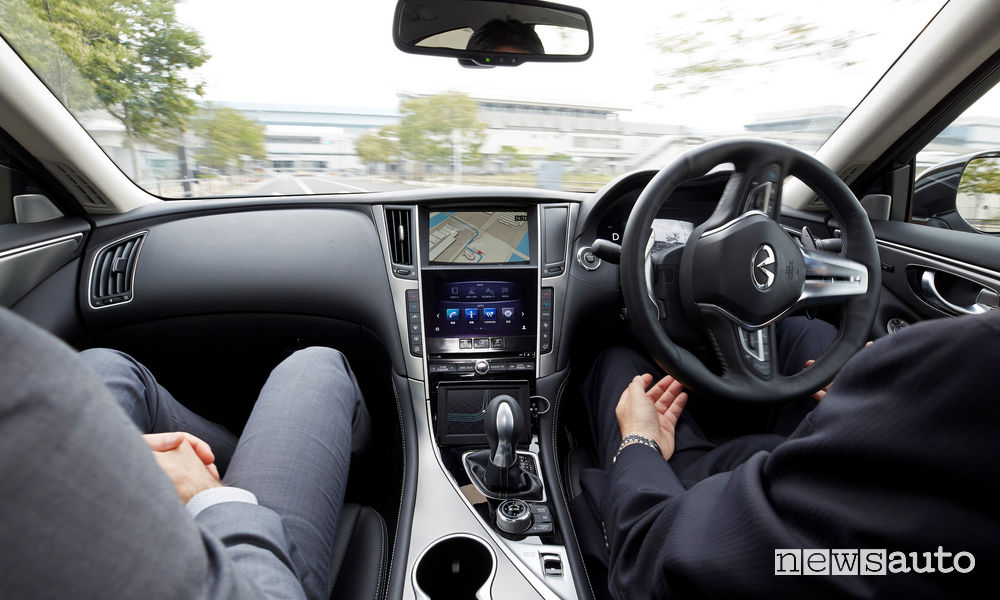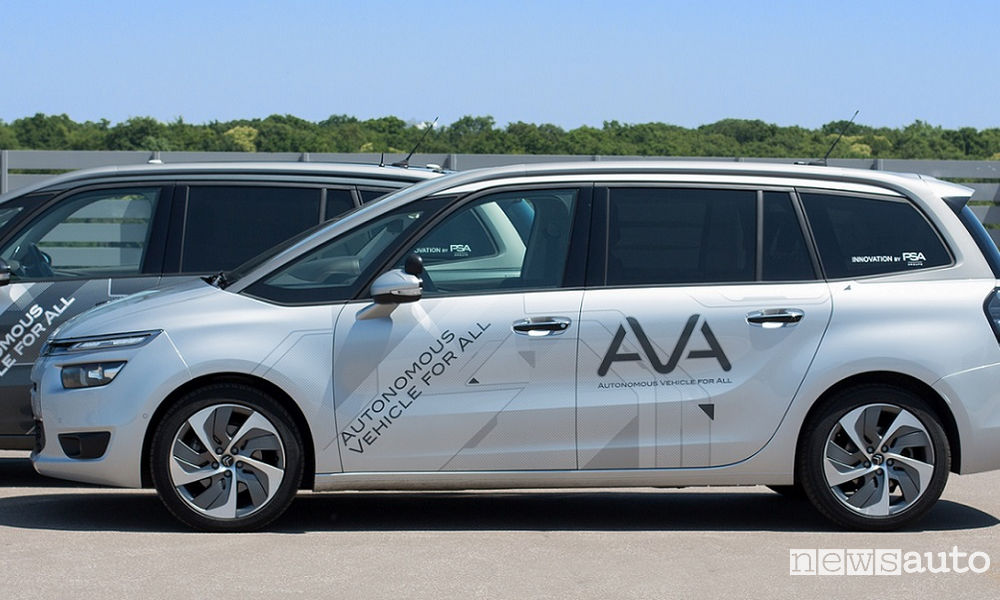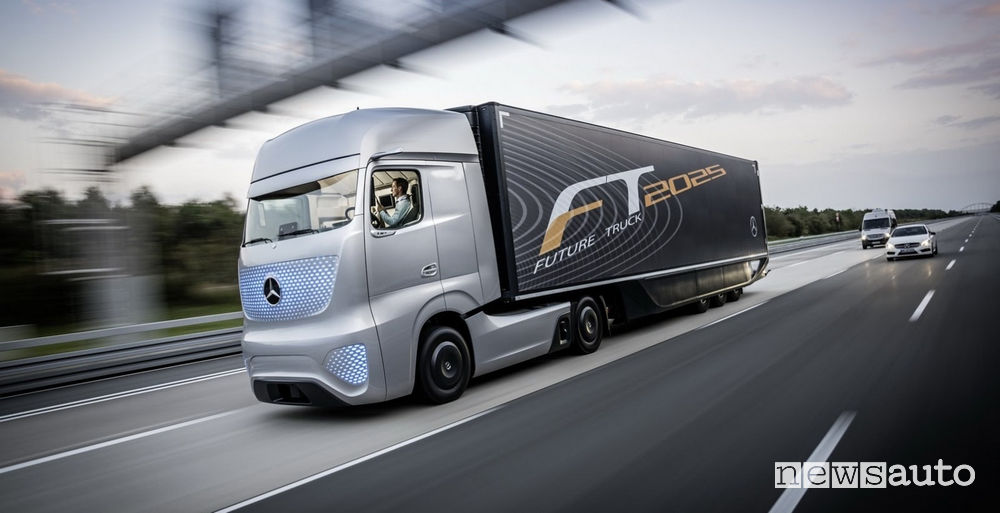Beware of self-driving cars, those that autonomous driving! Our Automobiles already today they integrate more and more driving assistance devices (ADAS) but driving assistance systems are increasingly “invasive” on car control: cars will soon be able to drive themselves without anyone at the wheel! There are both those in favor and against this technological future of the car, also following several accidents that have occurred over the years, such as the most striking one where a lady who was hit on her bicycle by an Uber car lost her life.
Self-driving, you read and it drives
It will arrive‘driverless carwithout a driver, only with passengers on board, the self-driving one! You can do other things, like reading or watching a movie while it drives in total autonomy. And this is already a reality with the level 3 autonomous driving already proposed by Mercedes-Benz and BMW. Let’s try to understand something more about the self-driving car, the levels of autonomous driving, the regulations and the devices on which it relies to manage the car’s functions.
What is autonomous driving? How does the self-driving car work? What are the levels of autonomous driving?
But what does “self-driving cars“? The car is said to be self-driving when it is capable of autonomously carrying out what a driver does to drive a car.
Through various devices such as radar, lidar, GPS, cameras and sensors, the car is also able to advance on its own.
In short with autonomous driving It means the result of the symbiosis of driving aid devices and systems for detecting the environment surrounding the car which will allow in the near future entrust control of the car solely to the computer, which will be able to manage the engine, gearbox, steering and brakes in complete safety. Almost all car manufacturers today focus on driver assistance systems, many of which are mandatory, which are the basic elements for future 100% autonomous driving which will arrive with level 5.
Autonomous driving level
There autonomous driving is divided into successive levelsin which the “depth” of intervention of the automatisms is increasing. They are essentially 6 from level 0 to level 5.
Autonomous driving LEVEL 0
At level “zero” autonomous driving are cars equipped with safety systems that can intervene only in certain driving situations such as crossing the lane line (line assist) or signaling the presence of an obstacle within the blind spot. At level zero, no device takes control of the car.
Autonomous driving LEVEL 1
Level 1 includes cars equipped with driver assistance systems that act on the steering, accelerator and brakes, such as lane keeping and adaptive cruise control, which are now quite widespread.
Autonomous driving LEVEL 2
With level 2 i systems capable of avoiding a collision by going around an obstacle, slowing down and accelerating to follow the flow of traffic, braking automatically. These devices are also starting to be available on cars that are not necessarily very expensive.
Autonomous driving LEVEL 3
It is with level 3 autonomous driving that the autopilot is able to take complete command of the vehicle and react to the driver’s instructions who, in certain traffic conditions, can “delegate” some crucial safety functions to the system. The first models equipped with level 3 autonomous driving entered the market in 2018. Mercedes-Benz and BWM already offer this system on the 7 series.
Autonomous driving LEVEL 4
With level 4 the car practically drives itself, the driver becomes a passenger and acts on the pedals and steering wheel only in case of emergency. This type of technology is already under development.
Self-driving LEVEL 5
With level 5 the vehicle has no pedals or steering wheel. You are just a completely passive passenger. The Tesla Model 2 should be the first car to use only Autopilot
Regulatory autonomous driving
Currently the road regulations Italian does not contemplate the possibility that a car can move autonomously, therefore the most advanced prototypes, ready to be placed on the market within about 5 years, are part of the so-called “level 4”that is, they still keep the steering wheel and pedals. The next step will therefore be the complete disappearance of classic driving controls.
In America things are different: here the legislation provides for the use of self-driving cars.”only in the presence of a driver in possession of a driving licence, who can intervene promptly in the event of any malfunction of the vehicle”.

Germany, in Europe, it was the first nation to introduce a law to regulate self-driving cars, with a commission and the first guidelines for self-driving cars: it must have a black box that records the “criticalities of the vehicle”.
Autonomous driving, how it is done, what are the devices
The “eyes” of the most advanced autonomous driving systems are made up of various instruments for detecting the surrounding environment. Let’s see in detail which devices autonomous driving is based on.
LIDAR
Laser Imaging Detection and Ranging (Lidar), i.e. a multiple beam laser scanner installed at the front of the car, which measures the distance to an object based on the way in which the emitted beam is reflected. It has a range of approximately 150 metres, and is able to distinguish detected objects, allowing the system to identify potential dangers.
RADAR
Radar: provide a detailed 360° view of the area around the car. The relative speed and distance of objects are measured using the Doppler effect (approaching or receding from an obstacle) and the delay generated by frequency changes between the emitted and received signal. Rearward-facing transmitters are essential for lane changes by detecting vehicles approaching from behind.
GPS
GPS the high-performance global positioning system will work in synergy with 3D digital maps to let the car know exactly where it is and what is in the surrounding area. In this way the car will be able to calculate the fastest and traffic-free route.
ULTRASONIC SENSORS
Ultrasonic sensors: They help detect objects at low speeds and short distances. They are used to detect objects and any dangers on the road, including pedestrians.
CAMERAS
The cameras they detect objects at close range, identify dangers on the road in front of the car and monitor horizontal and vertical signs. Some cars are equipped with a trifocal lens camera positioned in the upper section of the windshield, which helps detect pedestrians or any other road user who suddenly appears.
DATA
To analyze traffic data from the network the vehicle connects to a server that provides data on traffic conditions on the chosen route. In this way the car can “predictively” adjust its speed depending on the road situation it will encounter.

The data received from the sensors are managed by the microprocessors that “drive” the car, which also requires a broadband connection. In the future, the network will allow the interconnection of cars among themselves and with “smart” infrastructures (in Italy ANAS has published calls for “smart road” since 2016).
Autonomous driving control devices
The self-driving car uses the data collected by the systems just described to operate the controls and control devices. For example, the system designed by Bosch uses the following components:
ELECTRIC POWER STEERING
Electric power steering is used to control the steering system. To maximize safety, the EPS is designed to function even in the event of a failure, allowing the driver or the autopilot system to minimize the risk. This will be necessary to comply with US regulations on autonomous driving.
ELECTRONIC STABILITY PROGRAM
Obviously the presence of the electronic stability system is essential for autonomous driving. Also in this case, for safety reasons the ESP is designed to work even in the event of a failure, by installing an emergency system. The ESP can independently brake the vehicle without any intervention by the driver.
HUMAN-MACHINE INTERFACE
is an augmented reality system that will help the driver understand and intuitively use the system, projecting information such as speed, navigation suggestions and warnings into the driver’s field of vision. The resulting effect will be that of a fusion of these virtual elements with the surrounding environment.
IBOOSTERS

It is a brake booster which, unlike classic ones, can operate without the generation of vacuum by the internal combustion engine and remains active during electric driving. It can be used in all propulsion and transmission systems and is of course particularly suitable for hybrid and electric vehicles.
Mercedes autonomous driving video
What Italians think about SELF-DRIVING link HERE
→ Electric cars to buy selected and tested
→ Electric car prices and features
→ Hybrid car prices and features
→ Electric car charging cost
→ ELECTRIC CAR CHARGING SUBSCRIPTION RATES
→ Video tests ELECTRIC CARS
→ How much does it cost to recharge your electric car
→ Everything about charging electric cars
→ Electric car charging rates
→ ELECTRIC CAR CHARGING TIME CALCULATION
→ Latest lithium ion battery news
→ Selected and tested electric cars to buy
→ Electric car prices and features
→ CALCULATE ELECTRIC CAR CHARGING TIME
→ Electric car charging cost
→ Video tests of ELECTRIC CARS
Testing new electric cars
https://www.youtube.com/watch?v=videoseries
→ EV Driving all about electric and hybrid cars
#Autonomous #driving #levels #works
